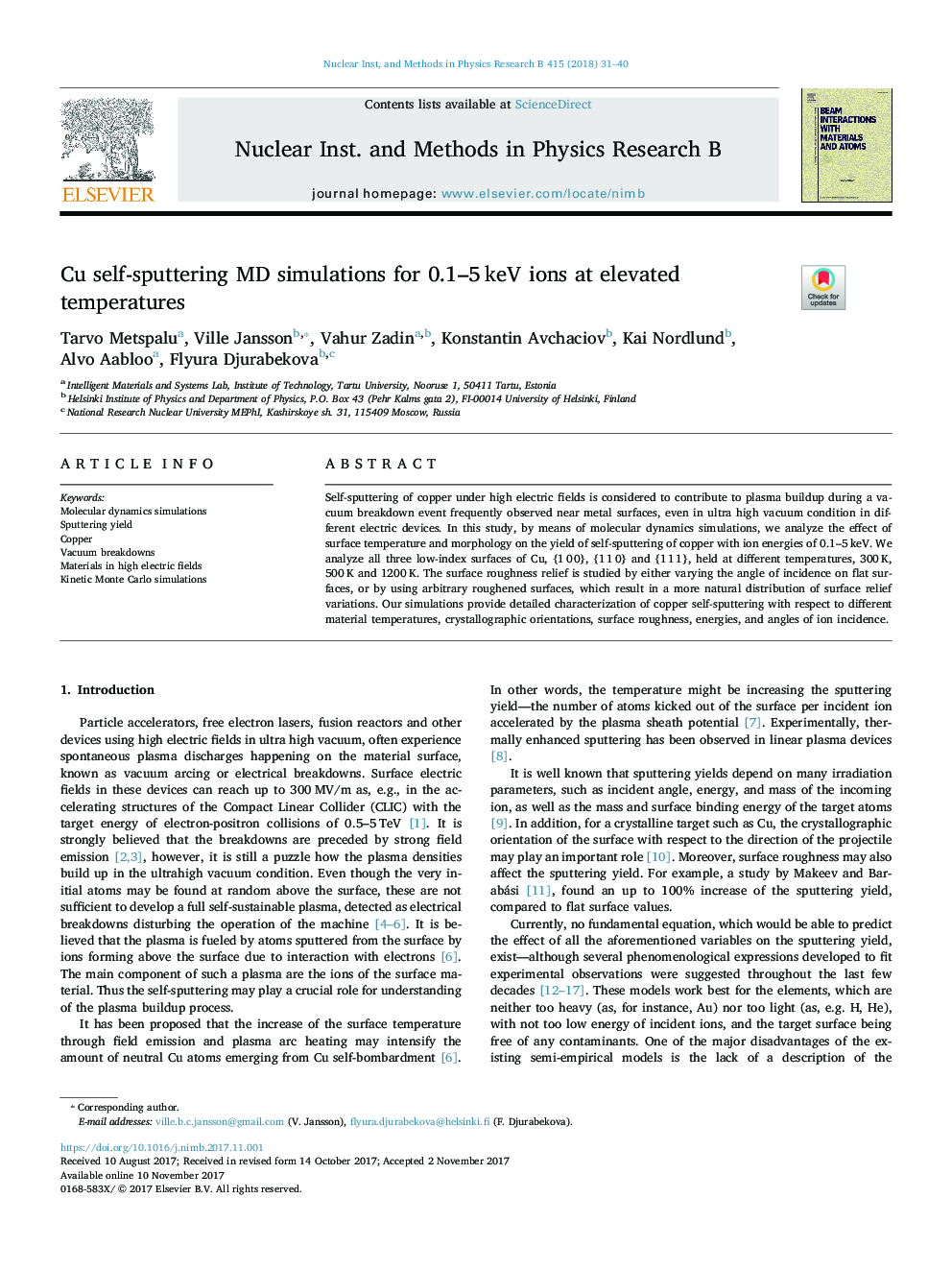| Article ID | Journal | Published Year | Pages | File Type |
|---|---|---|---|---|
| 8039446 | Nuclear Instruments and Methods in Physics Research Section B: Beam Interactions with Materials and Atoms | 2018 | 10 Pages |
Abstract
Self-sputtering of copper under high electric fields is considered to contribute to plasma buildup during a vacuum breakdown event frequently observed near metal surfaces, even in ultra high vacuum condition in different electric devices. In this study, by means of molecular dynamics simulations, we analyze the effect of surface temperature and morphology on the yield of self-sputtering of copper with ion energies of 0.1-5â¯keV. We analyze all three low-index surfaces of Cu, {1 0 0}, {1 1 0} and {1 1 1}, held at different temperatures, 300â¯K, 500â¯K and 1200â¯K. The surface roughness relief is studied by either varying the angle of incidence on flat surfaces, or by using arbitrary roughened surfaces, which result in a more natural distribution of surface relief variations. Our simulations provide detailed characterization of copper self-sputtering with respect to different material temperatures, crystallographic orientations, surface roughness, energies, and angles of ion incidence.
Related Topics
Physical Sciences and Engineering
Materials Science
Surfaces, Coatings and Films
Authors
Tarvo Metspalu, Ville Jansson, Vahur Zadin, Konstantin Avchaciov, Kai Nordlund, Alvo Aabloo, Flyura Djurabekova,
